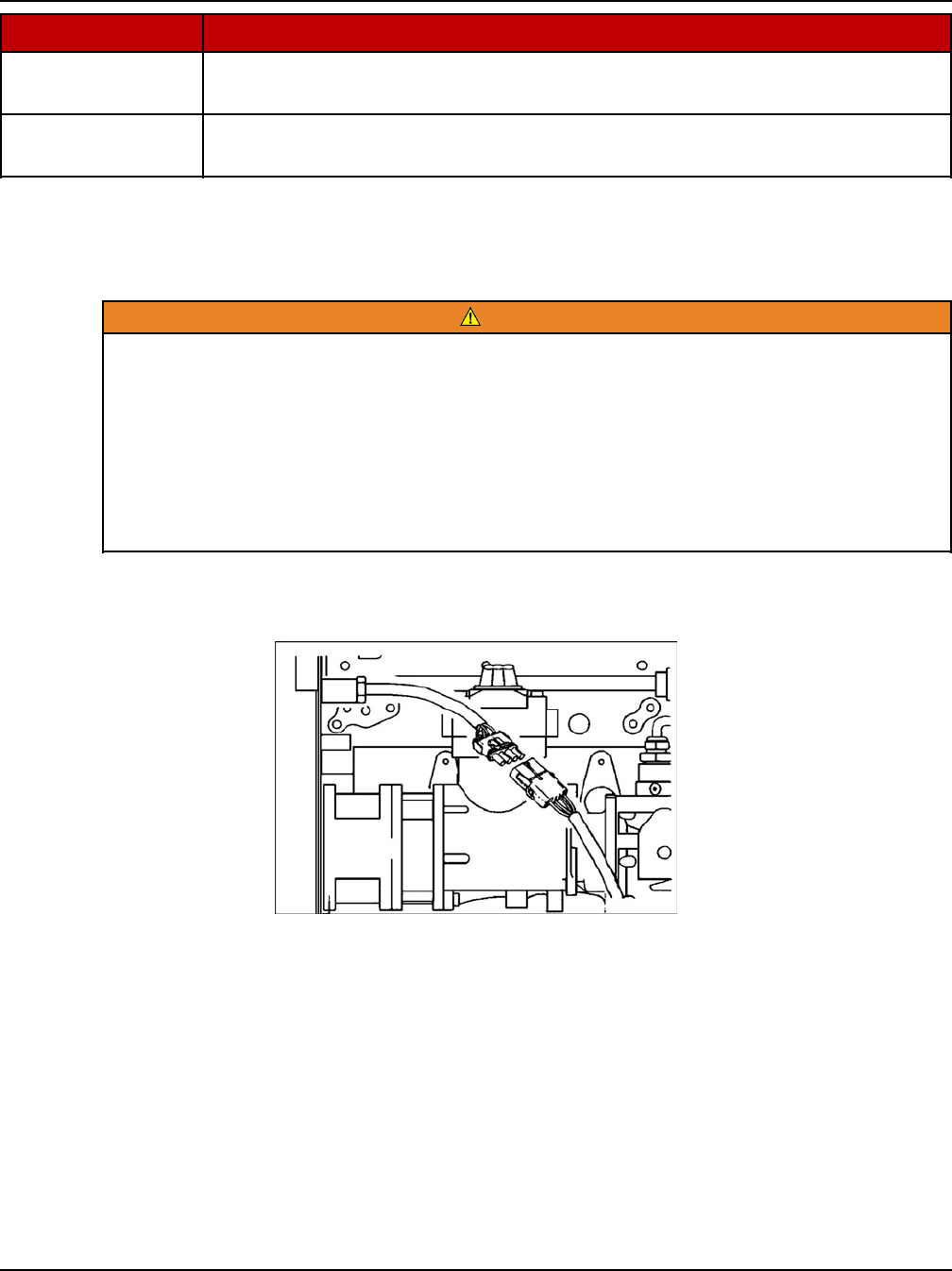Product Manual B
Table Of Contents
- Table of Contents
- 1. IMPORTANT SAFETY INSTRUCTIONS
- 1.1 Warning, Caution, and Note Styles Used in This Manual
- 1.2 General Information
- 1.3 Generator Set Safety Code
- 1.4 Moving Parts Can Cause Severe Personal Injury or Death
- 1.5 Electrical Shocks and Arc Flashes Can Cause Severe Personal Injury or Death
- 1.6 Fuel and Fumes Are Flammable
- 1.7 Batteries Can Explode
- 1.8 Exhaust Gases Are Deadly
- 1.9 The Hazards of Carbon Monoxide
- 1.10 Earth Ground Connection
- 2. Introduction
- 3. Control System
- 4. Operation
- 5. Maintenance
- 6. Troubleshooting

5. Maintenance7-2018
85A045R242 (Issue 12) Copyright © 2018 Cummins Inc.
Check Description
AC Ammeter At no load, the current readings should be zero. With a load applied,
each line current should be similar.
Panel Lamps When the operating panel is first connected to the DC supply, the
system runs a check by illuminating each of the indicator lamps in turn.
2. If all of the LEDs do not illuminate, replace the operator panel.
5.6 DC Electrical System
WARNING
Combustible Gases
Ignition of battery gases is a fire and explosion hazard which can cause
severe personal injury or death.
Do not smoke, or switch the trouble light ON or OFF near a battery. Touch a
grounded metal surface first before touching batteries to discharge static
electricity. Stop the generator set and disconnect the battery charger before
disconnecting battery cables. Using an insulated wrench, disconnect the
negative (–) cable first and reconnect it last.
1. Check the harness connections. If any harness connections are damaged,
contact your service representative.
FIGURE 41. CHECK HARNESS CONNECTIONS
2. Check the terminals on the batteries for clean and tight connections. Loose or
corroded connections create resistance, which can hinder starting. Clean and
reconnect the battery cables if loose, using an insulated wrench. Always
disconnect both ends of the negative battery cable. Reconnect one end of the
cable to the negative battery terminal and the other end to ground. This will
make sure that any arcing will be away from the battery and least likely to ignite
explosive battery gases.
3. Check connections at the battery charging alternator.
4. Visually inspect the alternator belt to make sure it is not loose or cracked.










